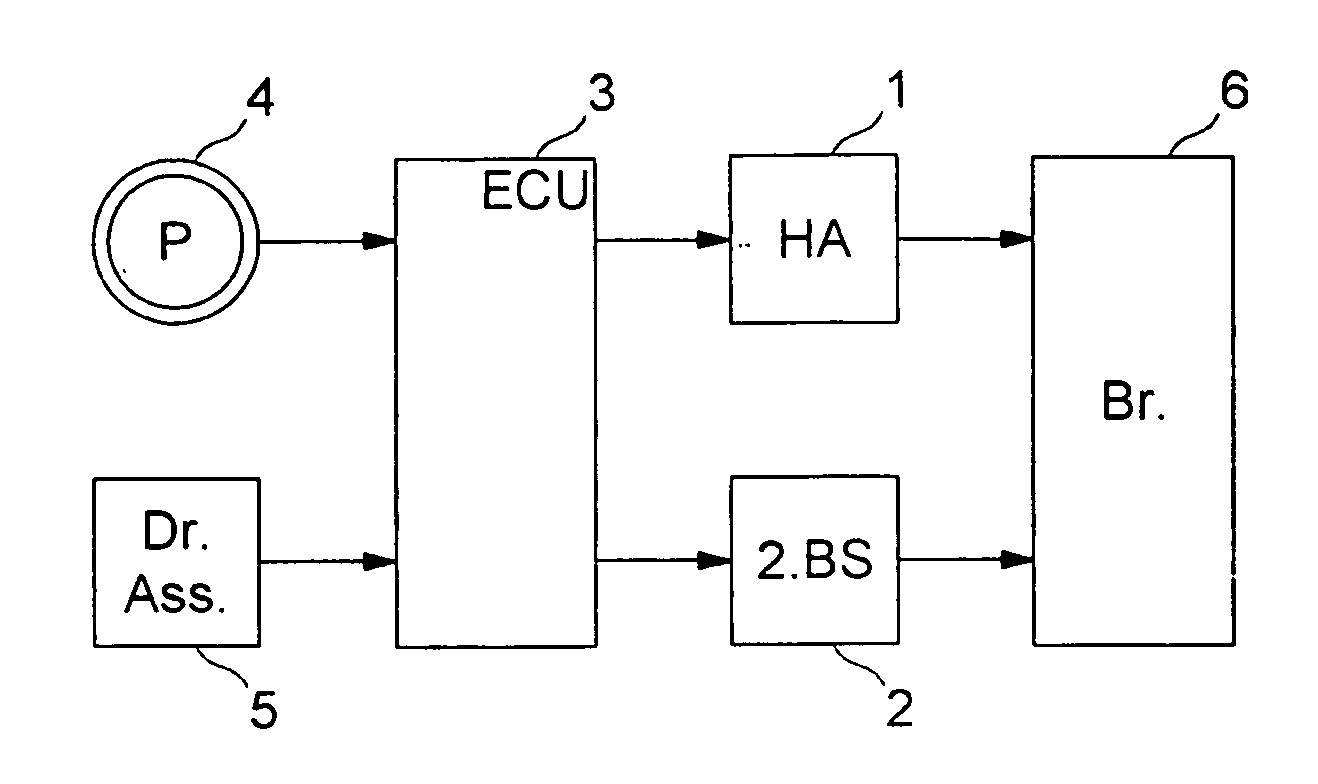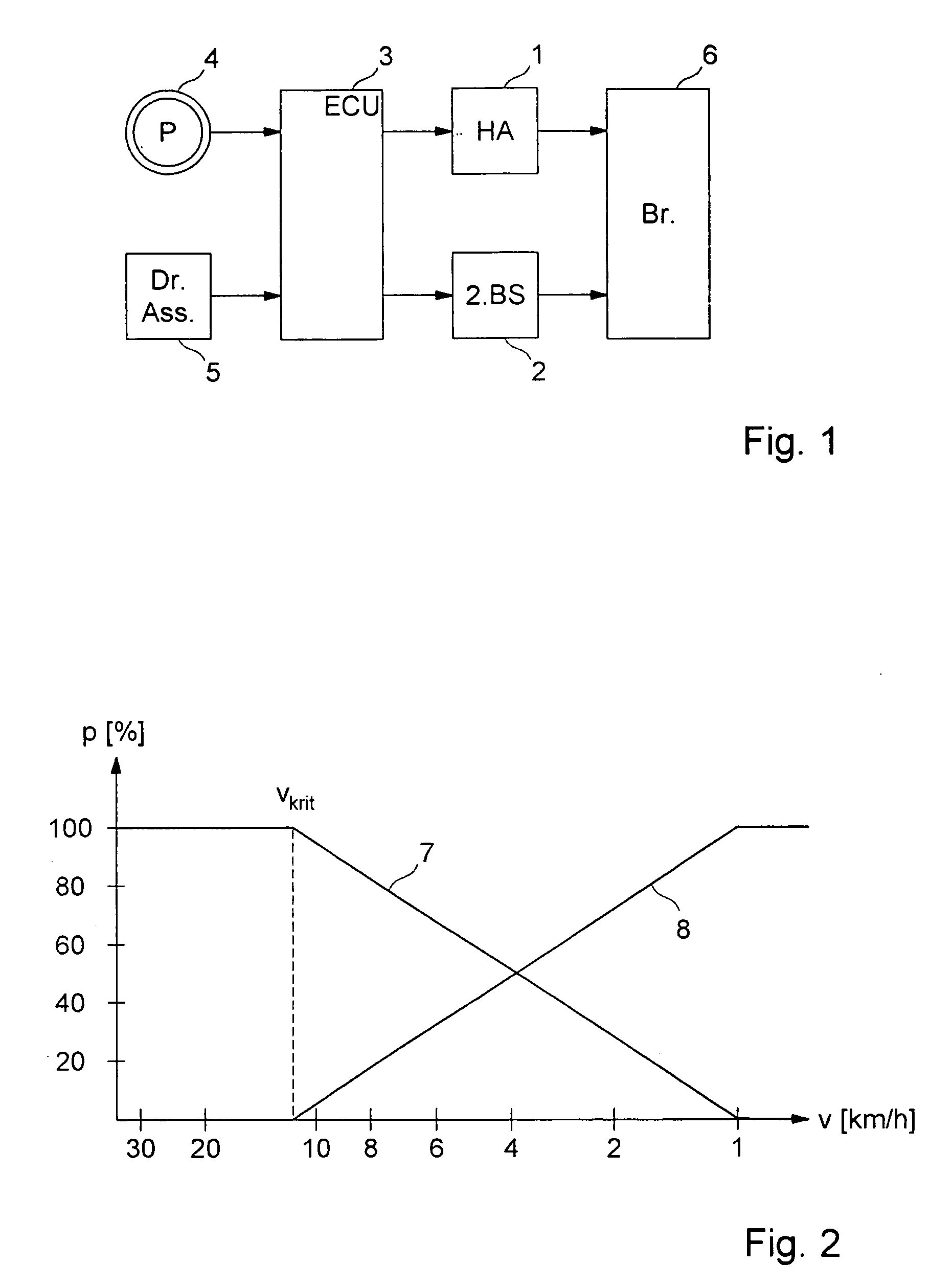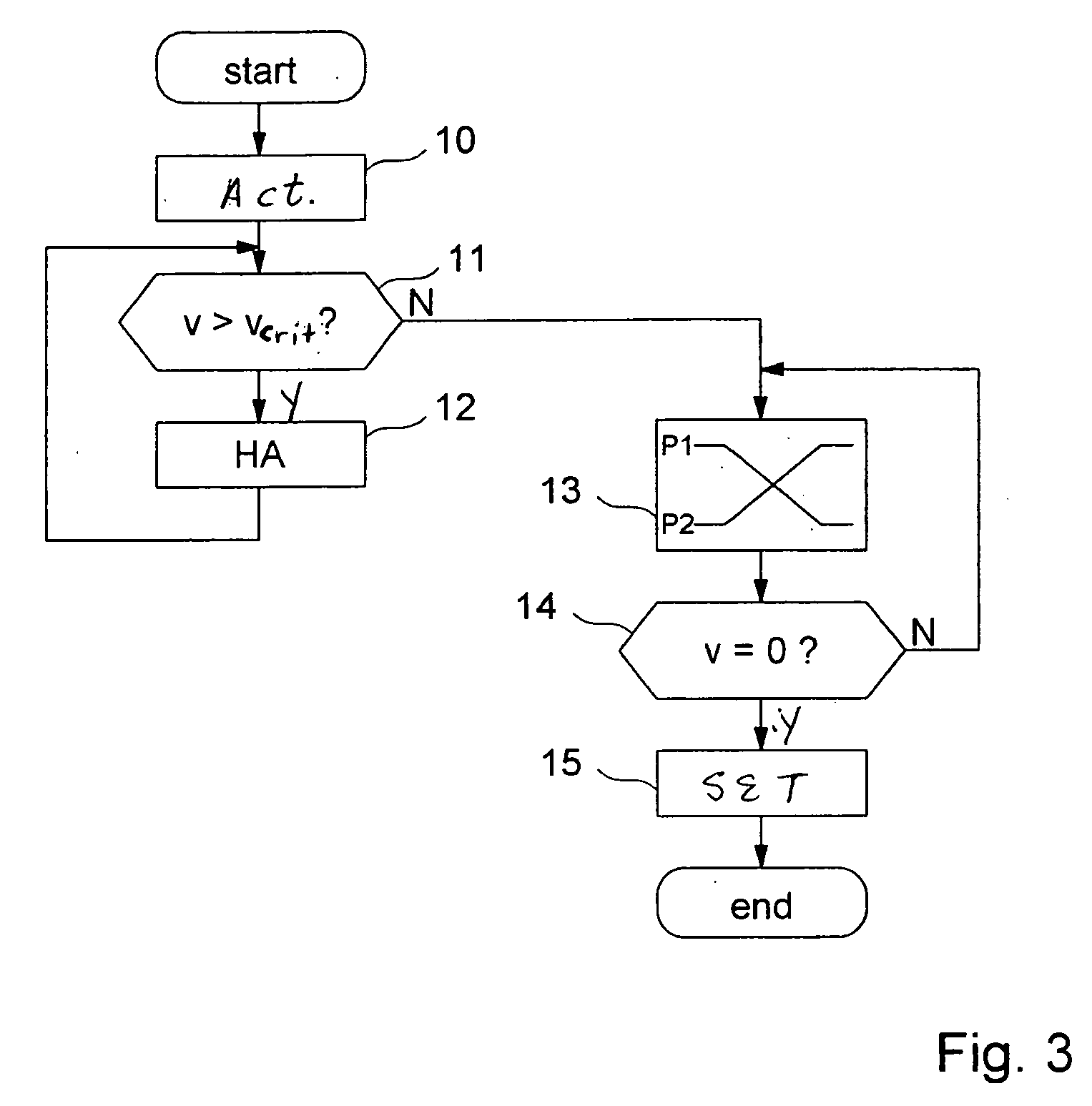Braking a vehicle in the context of an emergency stop
a technology for emergency stops and brakes, applied in brake systems, mechanical devices, transportation and packaging, etc., can solve problems such as discomfort and perception of jerks by drivers, and achieve the effect of increasing the proportion of the second braking system and reducing the proportion of the service brak
- Summary
- Abstract
- Description
- Claims
- Application Information
AI Technical Summary
Benefits of technology
Problems solved by technology
Method used
Image
Examples
Embodiment Construction
[0017]FIG. 1 is a block depiction of the important elements of an emergency stop system. In the present case that system encompasses two braking systems, namely a service brake having components 1, 3, and 6, and a second braking system independent thereof (e.g. a parking brake) having components 2, 3, and 6. Optionally, more than two braking systems could also be provided.
[0018] The service brake encompasses a positioning member 1 such as, for example, a hydraulic pump, with which a wheel brake 6 can be actuated. Second braking system 2, 3, 6 encompasses a positioning member 2 such as, for example, an electric motor, with which the braking pressure acting on wheel brake 6 can be varied. In the present example both positioning members 1, 2 act on the same braking apparatus, namely the brake caliper of a wheel brake 6. Optionally, positioning members 1, 2 can also act on different braking apparatuses, for example positioning member 1 on the brake caliper of a disc brake and positioni...
PUM
 Login to View More
Login to View More Abstract
Description
Claims
Application Information
 Login to View More
Login to View More - R&D
- Intellectual Property
- Life Sciences
- Materials
- Tech Scout
- Unparalleled Data Quality
- Higher Quality Content
- 60% Fewer Hallucinations
Browse by: Latest US Patents, China's latest patents, Technical Efficacy Thesaurus, Application Domain, Technology Topic, Popular Technical Reports.
© 2025 PatSnap. All rights reserved.Legal|Privacy policy|Modern Slavery Act Transparency Statement|Sitemap|About US| Contact US: help@patsnap.com



